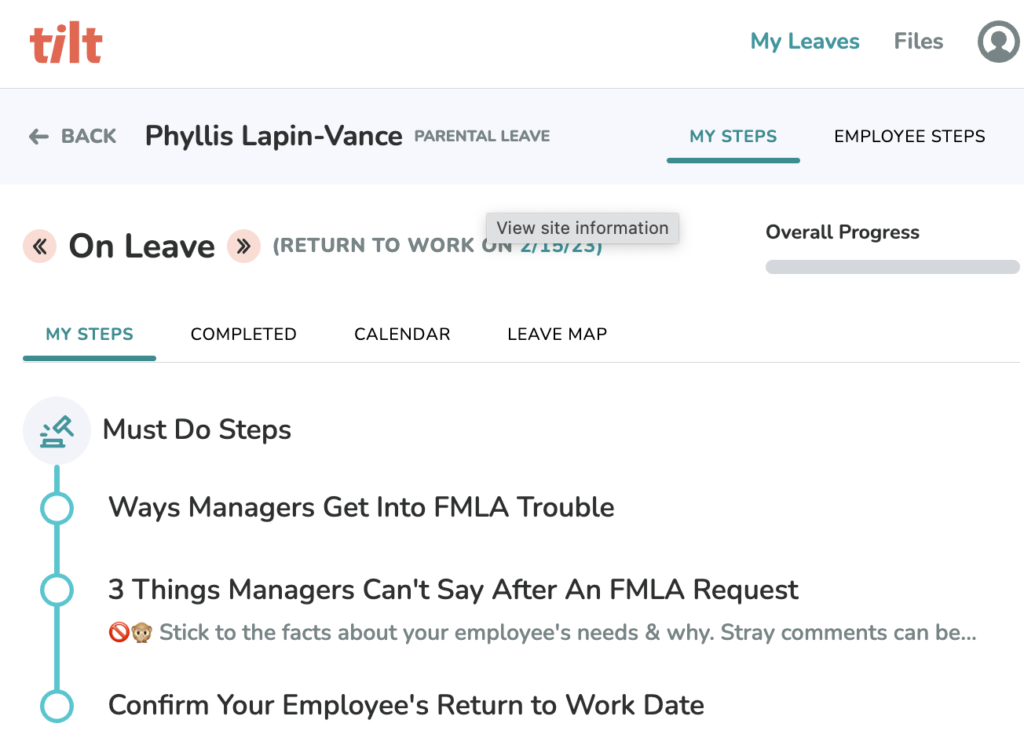Disclaimer: For the sake of this article, it should be noted that when we refer to “mental health leaves” we are talking about employees taking time off of work to address mental health conditions certified by a health care provider. We are not necessarily referring to an employee “taking a mental health day,” which is a colloquial term employees may use to signal that they are taking time to rest and recharge when there is no underlying medical condition.
If you’re living on planet Earth there’s a good chance that life has become a bit more stressful for you over these last few years. In the workplace, that added stress is manifesting itself in a multitude of ways that are having a tangible impact on human resource teams across the map. As one of our customers put it:
“A rapid growth in headcount (400-1,000), increased parental leaves (younger demographic) and an uptick in mental health/medical leaves due to COVID caused essentially a 1900% increase in anticipated leaves per year (from 3 to 40+). The lack of resources at hand makes this especially difficult for a two-person team.”
Without outside help, the rapid rate at which mental health leaves are putting additional burdens on people teams can become overwhelming quickly. This may lead to unsupported employees relying on overworked HR team members to guide them during a time of need, potential compliance risks due to managers who aren’t educated on the do’s and don’ts of mental health leave, and strengthened stigmas signaling to employees that perhaps taking a mental health leave is unacceptable.
Your solution for the unexpected
Mental health leaves aren’t typically planned out in advance. We don’t think to ourselves, “you know, March seems like a good month for my life to feel like it’s completely unraveling.” Because of that, an employee requesting a mental health leave might appear out of the blue, so you need to be ready to manage the leave and support your people at the drop of a hat.
With Tilt, an employee needing a mental health leave will come into Tilt where our Leave Success Managers (AKA LSMs, AKA Empathy Warriors) will build out a personalized leave plan outlining everything they need to know and everything they’ll need to do. It’s common for employees to not be aware that mental health leaves may be covered under the FMLA or similar state leave laws that protect their job and benefits.
As such, our Empathy Warriors will work directly with your employees to ensure they have the proper medical certification with which we can confirm whether or not their leave qualifies under FMLA or state law. Once confirmed, Tilt will send the employer a designation letter stating whether their employee’s time away from work is protected.
The FMLA lists the types of providers who are qualified to complete medical certifications, but even if the employee isn’t seeing a health care provider specified in the Department of Labor’s FMLA regulations, an organization’s health insurance provider might allow claims for those providers–and that may require them to accept the paperwork for FMLA purposes as well.. Alternatively, an employer with sufficient knowledge of the employee’s condition might simply decide to accept a medical certification form from a provider not specified in the regulations–or not require paperwork at all– and apply FMLA.
Sound confusing? Fret not, that’s what we’re here for.
Tilt clears up payroll confusion
Payroll complexities are another reason why it helps to have experts like Tilt on your team. The primary payroll parameter to be mindful of is if the leave is unpaid (i.e., FMLA) or if it’s paid (i.e., employer benefits program, state program, PTO, or some combination of the three).
If the leave is unpaid: If the employee’s leave qualifies as FMLA, and therefore their job and benefits are protected, the employer and employee must make arrangements for how any employee premiums will be paid for while away from work. These arrangements can take many forms (more details from the Department of Labor), and when the employee returns they may be required to pay back their employer for any premium support they were given while on mental health leave. It’s…complicated.
If the leave is paid: If an employer has a paid medical leave policy, or requires employees to use PTO while out on medical leave that covers mental health leaves, then typically any benefit costs the employee was getting taken out of their paycheck will just continue to be taken out of their paycheck. Some states have benefits programs that will help offset the salary costs to employers, but it requires employees to apply for the programs. This isn’t always straightforward for employees, especially those who are battling mental health conditions, but Tilt makes this easy too!
If the leave is partially paid and partially unpaid: Some employers don’t have paid medical or mental health leave, but they do allow employees to take PTO to address their mental health. So in a scenario where the leave is qualified for FMLA (unpaid but benefits protected), but for a portion of the leave the employee uses PTO (paid), you’re now having to calculate payroll for part of a leave where arrangements will need to be made for the employee to pay back the cost associated with their benefits, and then part of the leave where payroll is unaffected. It should be noted that this situation may also apply if the employer offers medical leave but the employee exhausts it because they need more time than is available under the company peace plan.
Sounds like a nightmare to deal with? That’s why we’re here!
Tilt Tip: A majority of Tilt customers provide fully-paid medical leave benefits (we encourage all companies to explore this option) which covers an employee’s health insurance premiums and their salary while out on mental health leave. This is a good idea for a few reasons:
- It’s the human thing to do. An employee needing mental health leave likely is feeling overwhelmed with life in some capacity. If they’re also not being paid their salary, this can make the situation much worse.
- By covering their salary and insurance premiums (remember, if their leave qualifies as FMLA or similar state leave, their benefits are protected) you can avoid having to claw back the overpayment when they return to work.
Tilt provides pay calculations to both an organization’s payroll and People Teams to make figuring out how much is owed a cinch, but we do recommend instituting a company policy to cover an employee’s salary and benefits while they’re on leave.
Cash in on state benefits? Yeah, we help there too
Covering 100% of an employee’s salary while on leave might be costing your organization some serious cash, but with Tilt we help ensure that your employees are applying for any state-related benefits that might be available to them. What this means is that if your employees live in a state that has state-paid medical leave, for example, mental health leaves might be covered.
Tilt’s in-house legal and compliance team stays up-to-date on the latest state leave laws and our personalized leave plans guide your employees through every step of the way so they can file claims easily and on time. Here’s some information on why this is the best way to handle form filing, and if you want to learn how much you could save by taking advantage of state benefits, check this out.
Managers…the hidden danger
Administrative cluster [redacted]s aside, one of the most common ways mental health leaves get mucked up is because of uneducated managers. Stigmas around mental health and a lack of information explaining what managers can and can’t do or say to an employee going through a mental health journey can lead to a crushingly poor employee experience.
This can make mental health conditions worsen for the employee, and it can break the bond of trust between them and their employer. Managers who don’t know any better can not only cause turnover by getting leave wrong, they can also behave in an illegal manner (intentional or otherwise) and be the cause for legal action against your organization to occur.
Tilt builds in informational material for managers specific to the leave of absence their employee is taking so that when the time comes they can participate in their employee’s leave journey from an informed position.

About Tilt
Tilt is leading the charge in all things leave of absence management through easy-to-use tech and human touch. Since 2017, our proprietary platform and Empathy Warriors have been helping customers make leave not suck by eliminating administrative burdens, keeping companies compliant, and providing a truly positive and supportive leave of absence experience for their people.







